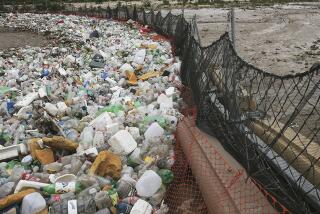Kia to open $1-billion auto factory in Mexico
- Share via
South Korean automaker Kia Motors Corp. will open a $1-billion auto plant in northern Mexico, President Enrique Peña Nieto announced Wednesday.
Kia will join other automakers rushing to build cars in Mexico, where low labor costs and extensive free trade agreements have turned the nation into a manufacturing powerhouse despite its high crime rate.
BMW revealed plans for a $1-billion plant in San Luis Potosi in July, a month after Mercedes-Benz and Nissan announced plans for a joint, $1.4-billion plant in Aguascalientes. Last year, Audi broke ground on a $1.3-billion factory near Puebla.
Honda, Mazda, Volkswagen, General Motors and Ford already assemble vehicles in Mexico.
Peña Nieto lauded the Kia plan, saying, “We celebrate that Kia Motors has decided to join in the success story that we Mexicans are writing,” and predicted the auto industry would be at the forefront of the nation’s economic expansion.
Mexico is already the world’s eighth-largest producer of automobiles, said Mike Jackson, an analyst at IHS Automotive. With the new factories it would move into sixth place, ahead of Brazil and South Korea, by 2020.
“The carmakers are using Mexico to hedge their bets on global sourcing,” said James Rubenstein, an auto industry analyst and geography professor at Miami University in Oxford, Ohio. “Mexico has gone from being a closed, high-tariff country to the top of the league for trade. You can ship your products in any direction.”
The spending isn’t all headed south. Automakers are still investing heavily in the U.S., expanding and updating existing factories.
General Motors on Wednesday said it would pour more than $200 million into two existing U.S. factories, and would move assembly of the next-generation Cadillac SRX from Mexico to Spring Hill, Tenn.
Mexico now accounts for more than 18% of North American auto production. That’s expected to jump to 25% or more by 2019 as automakers pour billions of dollars into factories, Jackson said.
Mexico offers a workforce with good engineering and manufacturing skills at a lower price than the U.S., Japan and Europe, said Mark Muro, a policy analyst at the Brookings Institution.
“We could hit a time when more than half of North American auto jobs are in Mexico,” Muro said.
But such a milestone would be partly symbolic because auto factories are far less labor intensive than in years past, he said.
High-paying white-collar jobs are likely to remain north of the border, Muro said.
“The high-value design, engineering and innovation technology jobs remain in the U.S. and are clustering even more in places like Detroit and California,” Muro said.
The Kia factory will be built in the city of Pesqueria, in the border state of Nuevo Leon, and completed in the first half of 2016, said Hyung-Keun Lee, vice chairman of Kia Motors Corp. It represents the first investment by any South Korean automaker in Mexico.
It will have the capacity to build 300,000 vehicles annually and will alleviate a shortage of cars for the U.S. market that has hampered the growth of Kia and its sister brand Hyundai, which owns 34% of Kia. The companies share the development of engines, transmissions, car platforms and automotive technology.
Kia has grown rapidly in the U.S. in recent years. Its sales this year are on track to reach about 600,000 vehicles, double the volume it sold in 2009.
Kia’s sole North American factory is in West Point, Ga., where it builds the Sorrento crossover and Optima sedan, as well as Hyundai’s Santa Fe sport utility vehicle. The plant, which also makes parts for Kia and Hyundai vehicles, employs about 3,000 workers.
While Kia hasn’t officially said what it will build in its Mexico plant, it’s likely that the automaker will focus on small cars, including the Rio subcompact hatchback, the Forte compact sedan and the Soul compact crossover, said Ed Kim, vice president of industry analysis at AutoPacific.
The Soul is Kia’s second-most-popular vehicle in the U.S., and the automaker is struggling to keep up with demand. Meanwhile, the Rio’s size makes it popular in Latin America.
Kia has lagged in sales in the competitive compact car segment, where it offers the Forte. It’s a high-quality car built on the same platform as Hyundai’s immensely popular Elantra, yet it doesn’t match the Hyundai’s sales, Kim said, in part because of supply constraints.
“Building Forte in North America really could go a long way toward increasing that model’s presence here,” Kim said.
Kia’s Pesqueria plant could also be tapped to build various Hyundai vehicles, including the subcompact Hyundai Accent and a planned compact crossover from Hyundai based on the Kia Soul.
david.undercoffler@latimes.com
Times staff writer Tracy Wilkinson in Mexico City contributed to this report.








